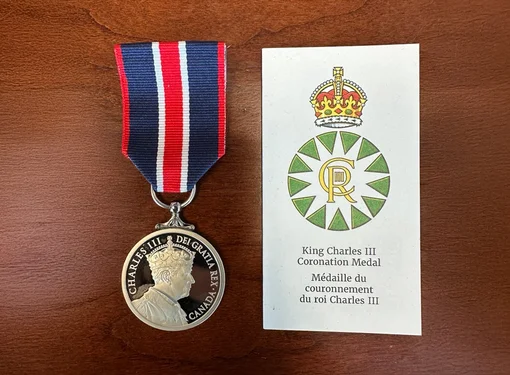A wheelchair for every occasion
Everyone knows about cars. For the city, a regular sedan is appropriate, but people may opt for all-terrain vehicles to go camping or into the woods.
Similarly, different types of activities demand different kinds of wheelchairs. What is different about them?
Why different wheelchairs?
Before performing an activity, it is important to consider two things: whether the wheelchair can perform the activity and whether it can perform that activity safely.
This idea is similar to cars. A sedan is not typically used for rugged terrain because it may not be strong enough and could get stuck in dirt.
So what kinds of activity-specific wheelchairs are there?
Sports wheelchairs
 Above image: Wheelchair basketball in action. The cambered rear wheels help prevent tipping and add stability. (Photo credit: US Navy.)
Above image: Wheelchair basketball in action. The cambered rear wheels help prevent tipping and add stability. (Photo credit: US Navy.)
This is perhaps the most well known among activity-specific wheelchairs. While sports may vary and require different types of sports wheelchairs, they all contain many common features.
One thing that people notice almost immediately is the camber of the rear wheels. ("Camber" refers to the angle at which the wheels are aligned.) Rather than being perpendicular to the ground, sports wheelchairs' rear wheels slant outwards.
The reason for this slant is to increase stability. If you imagine a car turning quickly, it has the potential to tip over. The same applies for wheelchairs; this camber increases the chair's grip on the ground and lowers the chances of tipping.
Sports wheelchairs also often contain a back wheel, behind the backrest. This provides protection against flipping backwards, especially when accelerating quickly.
Some sports that involve contact, such as wheelchair basketball and wheelchair rugby, may also have bumpers at the front to protect feet and toes.
Racing wheelchairs
 Above image: A racing wheelchair in action. (Photo credit: Wikimedia Commons.)
Above image: A racing wheelchair in action. (Photo credit: Wikimedia Commons.)
While racing wheelchairs have camber like other sports wheelchairs, they also have a single large front wheel. This helps with forward momentum of the chair.
As well, there is no back wheel to prevent flipping, since one must lean forward to push the chair anyhow. There may also be a special seat to help with efficiency.
The shape of racing wheelchairs also helps with wind resistance, making the racer more aerodynamic.
Beach wheelchairs
 Above image: A beach wheelchair, with larger and thicker wheels to work on sand. (Photo credit: Wikimedia Commons.)
Above image: A beach wheelchair, with larger and thicker wheels to work on sand. (Photo credit: Wikimedia Commons.)
Wheels and sand often do not go together. That is why it is rare to see bicycles on sandy beaches. Similarly, wheelchairs often have trouble as well.
This prevents many people who rely on wheelchairs from enjoying the beach like everyone else.
Luckily, beach wheelchairs exist. They are usually made of plastic piping and have large wheels that can handle sand; they can also withstand water and uneven terrain.
The downside is that many beaches do not carry them yet due to cost, and they often require assistance to use.
If you are interested in renting a beach wheelchair in your area, we recommend checking out your city’s municipal website to find out if they are offered.
Airplane wheelchairs
 Above image: An airplane wheelchair that is narrow enough to fit through aisles on board. (Photo credit: Wikimedia Commons.)
Above image: An airplane wheelchair that is narrow enough to fit through aisles on board. (Photo credit: Wikimedia Commons.)
For people who cannot walk, airplane wheelchairs (also called "Washington chairs") are used due to their narrow shapes that can fit between aisles on board.
These require the assistance of airplane staff. They work by having the user transfer on to the chair, before being strapped down by safety belts.
Staff then proceed to pull the user backwards on to the plane until they reach one of the seats on board, where a final transfer is carried out.
Hand cycles
 Above image: A hand cycle in action. (Photo credit: US Department of Defense.)
Above image: A hand cycle in action. (Photo credit: US Department of Defense.)
As the name suggests, hand cycles are the hand-propelled equivalent of bicycles. They operate by pushing the handlebars, which work and move very similarly to foot pedals of a bicycle.
The only differences are that hand cycles are often three-wheeled like tricycles, and there are foot rests where pedals would normally be.
They can also be lower to the ground, though some are about the same height as normal wheelchairs.
What does the future hold?
Just like different muscles are activated for different tasks, different wheelchairs are used for all kinds of activities as well. As technology improves, so will the existing types of wheelchairs – and perhaps more types of them will arise.
The evolution of wheelchairs will depend on three main factors: the motivation of those who want to improve them, the skills of those who can build them, and the passion from those who use them so that we continue to see improvements and innovations.
The wheelchair is a liberating tool – the more types of chairs we see, the more liberating everything will become for those who use them.







